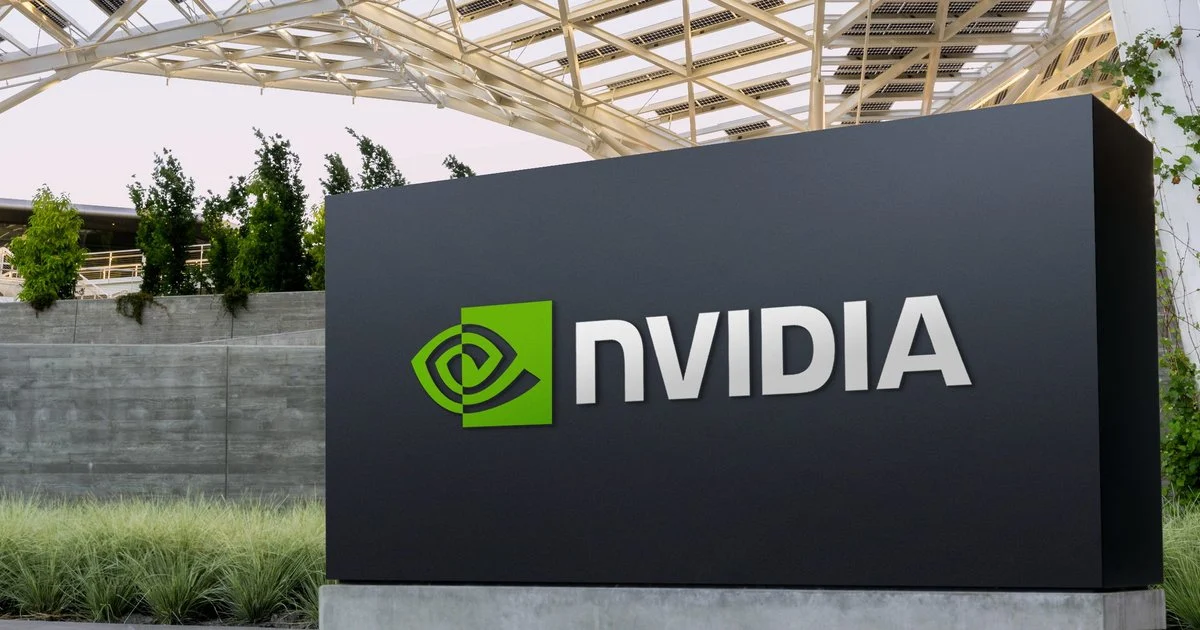National News
I Was Convinced Nvidia Was a Bubble. I Was Wrong.
The Western Staff

For the longest time, my view on Nvidia was unequivocal, and I wasn't quiet about it. As a journalist covering technology and finance, it's my job to be skeptical, to look for the cracks in the facade. And with Nvidia, I saw them everywhere.
I was one of the people who pointed to the Wccftech reports about OpenAI exploring Google's TPUs and said, "See? The moat isn't as deep as they claim." I saw it as the first real chink in the armor, proof that even the biggest AI players would eventually balk at Nvidia's prices and find a cheaper way. I read the steady drumbeat from The Motley Fool, which skillfully used billionaire Philippe Laffont’s 1.4 million share sale as a club to beat the 'overvalued' drum, and I nodded in agreement. It felt like a textbook case of 'smart money' getting out while the getting was good. I consumed the analysis on Yahoo Finance, giving full credence to the CFRA analyst who confidently predicted AMD would 'close the gap' by 2026.
To me, the narrative was simple and compelling: Nvidia was a brilliant company experiencing a supernova moment, but it was a moment, not a permanent state. The combination of sky-high valuation, brewing competition, and price-sensitive customers spelled a classic, tech-fueled bubble. I was certain of it. And I was wrong.
My change in perspective didn't come from a press release or a slick keynote. It came from a late-night conversation with a source, a lead engineer at a mid-sized AI startup you've never heard of. I was probing her about GPU costs, expecting to hear complaints. Instead, she laughed.
"You're asking the wrong question," she told me. "You think we're buying a chip. We're not. We're buying time."
That single word—time—was the catalyst. It forced me to dismantle and re-examine every one of my deeply held, critical beliefs about the company.
The Myth of the Broken Moat
One of the pillars of my skepticism was the idea that Nvidia's dominance was solely based on its hardware performance, a lead that could be eroded. The OpenAI story was my Exhibit A. If the world’s leading AI lab was actively seeking alternatives to lower costs, it felt like a clear signal that Nvidia's pricing power was fragile. Any competitor with a 'good enough' chip at a lower price could start peeling away customers.
But my engineer source blew that idea apart. She explained that the cost of their Nvidia H100s was a rounding error compared to the cost of her team's salaries. What she was really paying for was CUDA, Nvidia's decade-and-a-half-old software platform. She talked about the millions of developer hours poured into its libraries, the instant solutions found on developer forums, the pre-trained models, and the robust toolchains that allow her team to iterate in hours, not weeks. Switching to a competing architecture, even a theoretically cheaper one, would mean retraining her entire team and rewriting their entire software stack from the ground up. The cost wouldn't be in dollars, but in months, or even years, of lost development time—a death sentence for a startup.
I began to see the recent Blackwell platform launch in a new light. It wasn't just a more powerful chip. It was the next floor built upon that same, unshakable software foundation. The OpenAI story wasn't a sign of Nvidia's weakness; it was a stress test that revealed the true, deeply entrenched nature of its strength. It’s not a hardware lock-in; it’s a comprehensive, value-additive ecosystem that competitors can't replicate by simply taping out a new piece of silicon.
The Illusion of 'Overvaluation'
Armed with this new understanding, I revisited my second core belief: that the stock was dangerously overvalued. The Laffont share sale had been my proof. A sophisticated investor cashing out nearly a billion and a half dollars had to be a sign of a frothy top. But I realized my focus was far too narrow.
Focusing on one investor's portfolio management is like analyzing a single pixel on a 4K screen. You learn nothing about the bigger picture. So, I forced myself to zoom out. I stopped looking at the stock ticker and started looking at Nvidia's partners. I saw Foxconn, the world’s largest electronics manufacturer, collaborating with Nvidia to build the next generation of automated factories powered by its robotics platform. I saw logistics company Cyngn deploying Nvidia’s AI to create autonomous industrial vehicles.
I understood then that I had fundamentally miscalculated the Total Addressable Market (TAM). I was thinking of it as 'AI servers.' That was wrong. The real market is the digital transformation of the entire physical economy. It's drug discovery, climate change modeling, aerospace engineering, and the creation of 'digital twins' for every major industrial process on the planet. This is a multi-trillion-dollar shift, and Nvidia is not just a participant; it is selling the foundational tools—the digital picks and shovels—for this new industrial revolution. The race to a $4 trillion market cap suddenly seemed less like irrational exuberance and more like the market slowly, painstakingly pricing in the sheer scale of this transformation.
The Misleading 'Competition' Narrative
Finally, I had to confront my belief in the AMD narrative—that a scrappy, capable competitor would inevitably eat into Nvidia's lead, just as it had in the CPU wars against Intel. The idea that AMD would 'close the gap' by 2026 felt like a natural law of the tech industry.
But this analogy is flawed because the game has changed. Nvidia is no longer just a chip company. Looking at the Blackwell announcement again, the GPU itself was only part of the story. The other part was the NVLink switch, the high-speed interconnects, the networking architecture, and the full-system design that binds thousands of chips together into a single, cohesive supercomputer.
AMD is building a very powerful car engine. It’s an incredible feat of engineering. But Nvidia is designing and building the entire car, the robotic factory that assembles the car, the high-speed highway the car drives on, and the GPS that navigates it. Comparing them on chip specs alone is a profound category error. By 2026, the 'gap' AMD must close isn't just in teraflops; it's in a full-stack ecosystem of hardware, software, networking, and integrated systems that has been compounding for over a decade. That gap is widening, not closing.
I am not here to give financial advice or to tell you that Nvidia is without risks. I am here to confess that my own skepticism, while rooted in sound-looking arguments, was based on a fundamental misunderstanding of the company's strategy and the revolution it is leading. I was wrong because I was looking at Nvidia as a semiconductor company when I should have been looking at it as the primary architect of the next economy. My certainty was misplaced, and I share this journey not as a final, arrogant truth, but as a humble invitation: look past the easy, cynical narratives. Question your own assumptions, just as I was forced to question mine. We might not be in a bubble. We might just be at the foothills of a new world.


